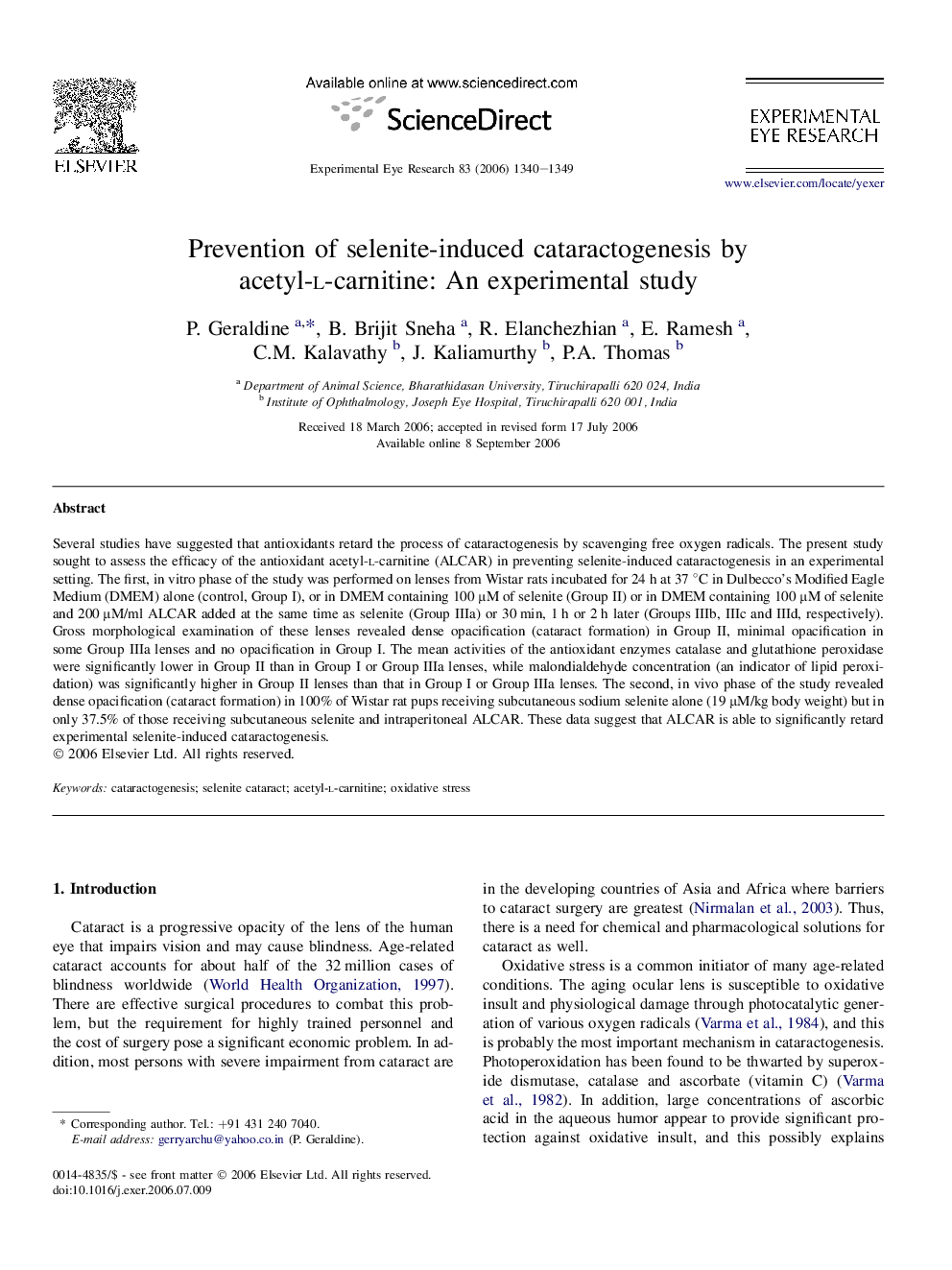| Article ID | Journal | Published Year | Pages | File Type |
|---|---|---|---|---|
| 4012482 | Experimental Eye Research | 2006 | 10 Pages |
Several studies have suggested that antioxidants retard the process of cataractogenesis by scavenging free oxygen radicals. The present study sought to assess the efficacy of the antioxidant acetyl-l-carnitine (ALCAR) in preventing selenite-induced cataractogenesis in an experimental setting. The first, in vitro phase of the study was performed on lenses from Wistar rats incubated for 24 h at 37 °C in Dulbecco's Modified Eagle Medium (DMEM) alone (control, Group I), or in DMEM containing 100 μM of selenite (Group II) or in DMEM containing 100 μM of selenite and 200 μM/ml ALCAR added at the same time as selenite (Group IIIa) or 30 min, 1 h or 2 h later (Groups IIIb, IIIc and IIId, respectively). Gross morphological examination of these lenses revealed dense opacification (cataract formation) in Group II, minimal opacification in some Group IIIa lenses and no opacification in Group I. The mean activities of the antioxidant enzymes catalase and glutathione peroxidase were significantly lower in Group II than in Group I or Group IIIa lenses, while malondialdehyde concentration (an indicator of lipid peroxidation) was significantly higher in Group II lenses than that in Group I or Group IIIa lenses. The second, in vivo phase of the study revealed dense opacification (cataract formation) in 100% of Wistar rat pups receiving subcutaneous sodium selenite alone (19 μM/kg body weight) but in only 37.5% of those receiving subcutaneous selenite and intraperitoneal ALCAR. These data suggest that ALCAR is able to significantly retard experimental selenite-induced cataractogenesis.
